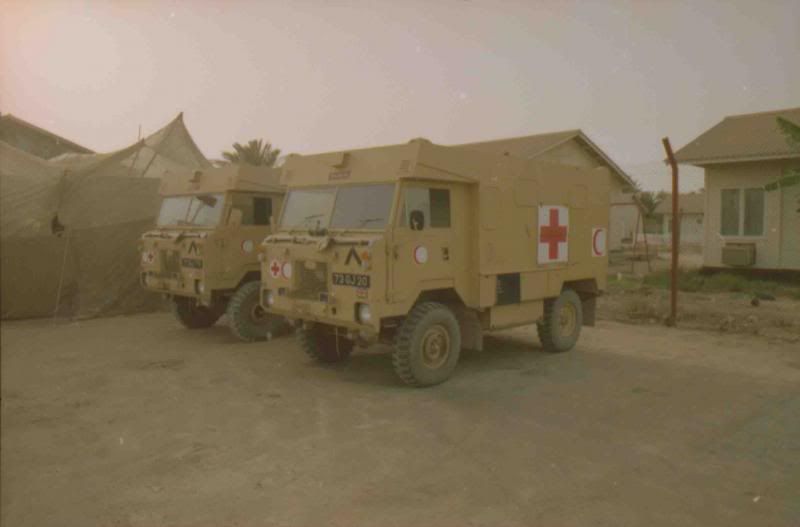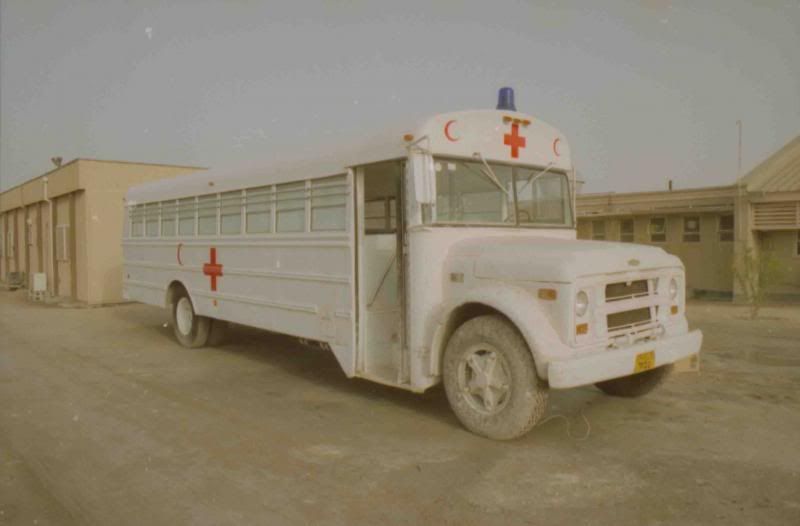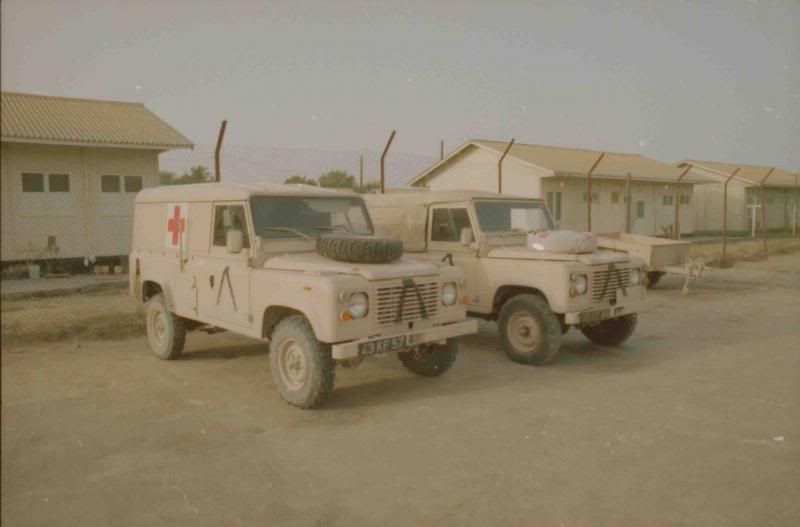-
Posts
490 -
Joined
-
Last visited
-
Days Won
8
Content Type
Profiles
Forums
Gallery
Blogs
Events
Articles
Store
Downloads
Posts posted by RAFMT
-
-
Why are the engines coming up seperatly is it because the they were ripped off or because they have rotted off to the point where they will fall off anyway
For the same reason the engines are frequently removed during recovery operations- simply to make things easier. As it is, the engines put a lot of weight to one side of the load, which can cause the load to twist and potentially damage it. This is the same regardless of whether the aircraft crashed 70 years ago or yesterday.
Also I'm not sure what sources the article you quoted used, my mention that the aircraft would come up in two pieces was through a conversation with a member of the RAF Museum staff involved in the operation. However this was some months ago so the recovery team may have decided otherwise but I doubt it.
-
I can also recommend "Wings of the Luftwaffe" and "Wings of the weird and wonderful", both recently republished, in which he recounts a number of the aircraft he has test flown. Both full of amusing anecdotes, such as Kurt Tank being more interested in Brown's views on his designs than in being interrogated.
-
the item that comes off the seabed wont bear any resembalance to the object that flew 70 years ago unless more vast amounts of money are spent stopping it turning to a pile of aluminium and ferric oxide. even then joe public wont recognise it for what it is.
The aircraft as it currently is, is substantially intact for it's age- intact enough that it could be clearly identified from the sonar images. Having spent the majority of the past 70 years buried in the sand has protected it to a large part from the tidal action and marine growth, it has also ensured a lower level of ambient oxygen than just sitting on the seabed. The footage from the initial dive showed that corrosion was minimal.
As I said in my previous post, for the first few months at least it will live in hydration tunnels - the RAF Museum are working with a team of conservators on methods of preservation. Much of the money for this process has already been donated by a number of organisations, including at least one aircraft manufacturer. This is not just about obtaining an aircraft, but about developing conservation techniques that can be used on other vehicles in the future, by other museums, not just the RAF Museum.
One other thing its being recovered in one piece who will get the job of chopping it up to transport it to Hendon.
Actually, last I heard it was coming up in two main pieces- the fuselage, with tail will come up as one piece, and the wings will come up as a second. The Dornier 17 (among a large number of planes) was designed to manufactured in that way- the fuselage would be made as a single piece and then the wing centre section would be inserted into the gap on top. The plan as i heard it would be to attempted to remove the rivets holding the wing centre section on. I believe they may be bringing the engines up seperately.
Although i had a chunter about a 1:1 scale model of a tank on here i think if the museum wants an example of Dornier it would have been better of with a model at a fraction of the costSurely by that logic there is no point in anyone spending any money on restoring or preserving any vehicles? Just use one of those new 3D printers and print out a 1:1 scale model of one, 'cause that's going to be a lot cheaper that preserving a vehicle. In fact, we could go one step better, why bother keeping any historical artefact, we could just have pictures of them in folders as it would take up a lot less space and would be a lot cheaper to maintain.
-
Firstly, the money for the project has come from the National Heritage Memorial Fund and a large number of private donations. In fact there is still a link on the RAF Museum website for people to donate because as others have said it will take a while to preserve it- the first part will involve it living in two hydration tunnels and will not be open to the public for about two months.
Secondly,
to me now its grave robbingJust to reassure people
During the action on August 26th 1940 Dornier 17Z-2 ‘5K+AR’ (Werke Nummer 1160) carried fourcrew members. Their individual names and roles were as follows:
1/ Willi Effmert – Pilot
2/ Hermann Ritzel - Observer
3/ Helmut Reinhardt - Radio Operator
4/ Heinz Huhn - Gunner
Only Willi Effmert and Hermann Ritzel survived and both became prisoners-of-war. Helmut
Reinhardt and Heinz Huhn both lost their lives, their bodies being washed ashore in Holland and
the UK respectively. Helmut Reinhardt now lies in Block BQ, Row 6, Grave 136 in the German
Cemetery at Ysselsteyn. Heinz Huhn lies in Block 1, Row 11, Grave 405 in the German Cemetery
at Cannock Chase, Staffordshire.
Combined research efforts from the RAF Museum, historian Chris Goss and the BBC have not
found any traces of family from the surviving crew members.
A lot of research was done to ensure that the aircraft was identified in order to ascertain the crew and their fates. Had there been the chance of bodies on board the MoD would likely have declared the site a war grave and it would have been out of bounds.
Those looking to keep up to date the RAF Museum have set up a web page here : http://www.rafmuseum.org/dornier
-
This set, donated to the RAF Museum collection by an RAF medic, of a vehicle pool used during Op Granby by the medical staff.




-
It's also worth bearing in mind that the regulations were only set in stone for home based vehicles, in overseas commands they could be countermanded by AOCs-in-C to meet local requirements.
Those pics all seem to be taken somewhere a lot sunnier than the UK, somewhere the canvas would fade quite quickly so it's entirely possible that local orders were not to waste time and materials repainting. Unfortunately I'm away from work for a while otherwise I'd have a couple of pics of blue-grey tilt Land Rovers.
Edit: Just found this picture on my laptop of a decidedly grey canvas tilt:

-
All i can say is that according to regulations it should be painted in 1966. Maybe the unpainted photos were later and the regulations changed? I am unable to get at my files at the moment to check. Or maybe the tilts were supplied uncoloured?
-
Assuming you are going for a UK, Near East or Far East based vehicle - i.e. blue-grey - then yes, the canvas would be finished in paint, finishing, bituminous emulsion, blue-grey, R.A.F. to specification C.S.2398

EDIT: Have you asked the RAF Museum if they hold the vehicle card for your friends Land Rover?
-
I thought it looked more like the Rhino of the 1st Armoured?
-
the camo seems to be in reverse, the mickey mouse ears are in green rather than black
It was possible (certainly with the RAF and I would assume the Army too) to have the base colour as Khaki Green, No 3 as usual but to have the disruptive pattern painted in Light Green, No 5. I assumed this was the look they were going for here?
Ted - unfortunately, I have yet to uncover a photograph of the recovery Matador. I've only come across a reference to it in a history of 51 MT, but it's been something I've been keeping a special eye out for.
-
QL bowsers did apear in the film BoB come to that most of the vehicles used in the film were not in service until well after the BoB and some such as the Matador artillery tractors never served with the RAF.
But Matador load carriers and platform lorries both served, and 51MT in the desert had a "Matador recovery vehicle".
There certainly were QLs in the BoB Film, and i seem to recall a fuel bowser of some description blew up when a spitfire ran into it. Only the spitfire clearly stopped well short and exploded just before the fuel bowser did- the special effects department were just as dodgy as the props department!
EDIT: not yours, but at about 6:27 on this clip is a QL bowser:
http://www.youtube.com/watch?v=urx6HuoSPFU
and from about 8:00 when the squadron is scrambling there are number of vehicles on screen and i'm sure another QL bowser is in there.
-
One of my best friends owns a similar vessel, a class 200 fast launch , which was defiantly used by T E. Lawrence.
it was originally named " Kathleen" and was requisitioned by the RASC for war used and sent to Blythe. It then was transferred to Northern Ireland ( castle archdale ) to a Sunderland / catalina base. Many people think there is only one of this class left, the one that's been restored and I believe is in a museum now, but there's on lurking in Essex too !
ST206 is the one now at the RAF Museum. The first batch of the 200s were allegedly piloted by Lawrence on their sea trials. If you know what number it was the RAF Museum holds copies of the movements cards for all of the RAF marine craft.
-
I would say the fact that they have been fully "badged up" would indicate they are not trainees.
This photo as stated could be any point in the early post war years- i have pictures of my grandfather from '48 with the same unlined BD blouse open at the neck for shirt and collar when walking out.
My guess is it's simply a unit portrait- many units took the opportunity to have portraits taken- obviously with the men wearing their best dress for that extra special occasion.
-
RAF tyres during WW2 were usually Dunlop. If it is an RAF example there will be a number on the tyre which can narrow it down to a few candidates.
Alternatively, there may be a part number stamped on the wheel hub.
-
I cross the Solent by ferry regularly to see parents on the island. It is hard to stress how relatively busy that stretch of water is, and having a brother who works for one of the ferry companies i've been on the bridge for a number of crossings- the sonar map showed just how many hidden sandbanks there are, and they can be deep enough for ships to cross one minute but at the change of the tide they are suddenly just below the surface waiting to catch the unwary.This makes knowing the sea lanes especially important as there is not a lot of room for all the vessels trying to traverse the waters.
Also have you thought of your start and end point yet? I'd definitely go with the above advice and get in touch with M&CA to organise things, especially as there are quite a few areas on the north side of the island used by sailing schools who wont be happy to have a big green thing chugging through their students.
-
I shall be there with the Queen's Royal Regiment living history group. If I can get away from the stand I shall certainly stop by and say hi to everyone.
Alternatively if anyone is in our area I'm the one responsible for the casualties...I mean, I'm the cook!
-
The MH-6 Little Bird based on the Hughes 500E was (and possibly still is) used by American special forces, three people could sit each side of the fuselage on a small bench type seat fixed to the outside of the helicopter. It was used, famously, in the Battle of Mogadishu(sp?) aka Black Hawk Down.
http://en.wikipedia.org/wiki/MD_Helicopters_MH-6_Little_Bird
I believe the is an MH-6 or OH-6 at the Helicopter Museum, although i could be wrong.
-
I was on holiday last week so didn't have any access to books.
According to the September 1944 edition of A.P.1086 42Y/2 was"500w A.C. portable test set, J.A.P. 4B engine"
-
It'll have to wait till I get home, but I have a series of photographs from the RAF Museum showing a crated spitfire being towed through Gibraltar by a WOT3 based Tructor. Let's just say that 1- there is nothing to show that it is a Spitfire from anything other than a few feet away where you can read the shipping markings. 2- It's HUGE, and a 100 odd of them would be, firstly, easily noticed by all the RAF servicemen on site who have so far failed to corroborate the story and secondly bloody hard to neatly bury.
And if we go from "they were brand new in the box aircraft neatly buried" to "assembled aircraft on the station declared surplus to requirements" then there is something else to bear in mind. They didn't dig a hole with a nice sloping ramp and wheel the aircraft in. They dug a pit, got preferably a bulldozer but any suitable large vehicle would do, and just pushed it in, oblivious to the crunching, screeching noises coming from what was the aircraft. If it wasn't needed then it didn't have to kept in anywhere near a good condition.
-
I believe they introduced during the 60s, could be wrong though and it could have been earlier.
The RAF Museum has an example that belonged to MRAF Sir Michael Beetham.
-
53AM78 was received at Ashchurch from British Leyland in Blue/Grey.
-
Sorry Mark no!! Dad was an MTM in 233ocu and was then trained on the Diesel Generators on the American Ground approach Radar- He still wont talk about it quoting Official secrets!!!!
All the manuals are now openly available through National Archives and museums, so maybe that will persuade him it's ok to talk.
Failing that I have the correct security clearance

-
Nice photo, illustrating the slow transition from the old warhorses to newer equipment.
And it looks a little too clean and tidy! How soon before/after the inspection was this taken?:-D
-
couldn't say with 100% certainty without being "face to face" with it, but it appears to be a Canadian manufactured example.




Untreated cotton wool, dressings or what?
in Emergency Services
Posted
could you show the whole label or copy the line at top?
A Swedish friend said that sjukvårdsmaterial is medical supplies and fetvadd is cotton wadding.
Beyond that it can be assumed that, yes, it's a wound dressing- pop it on the wound and apply a bandage to hold it in place.